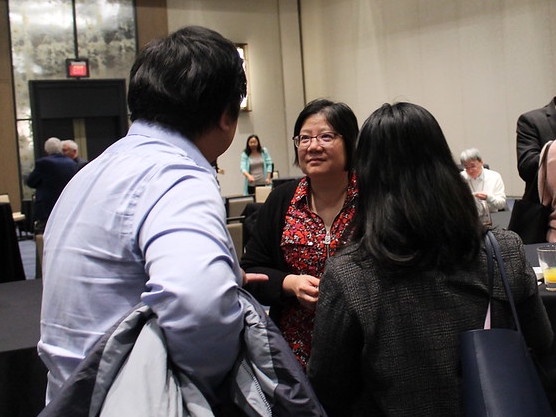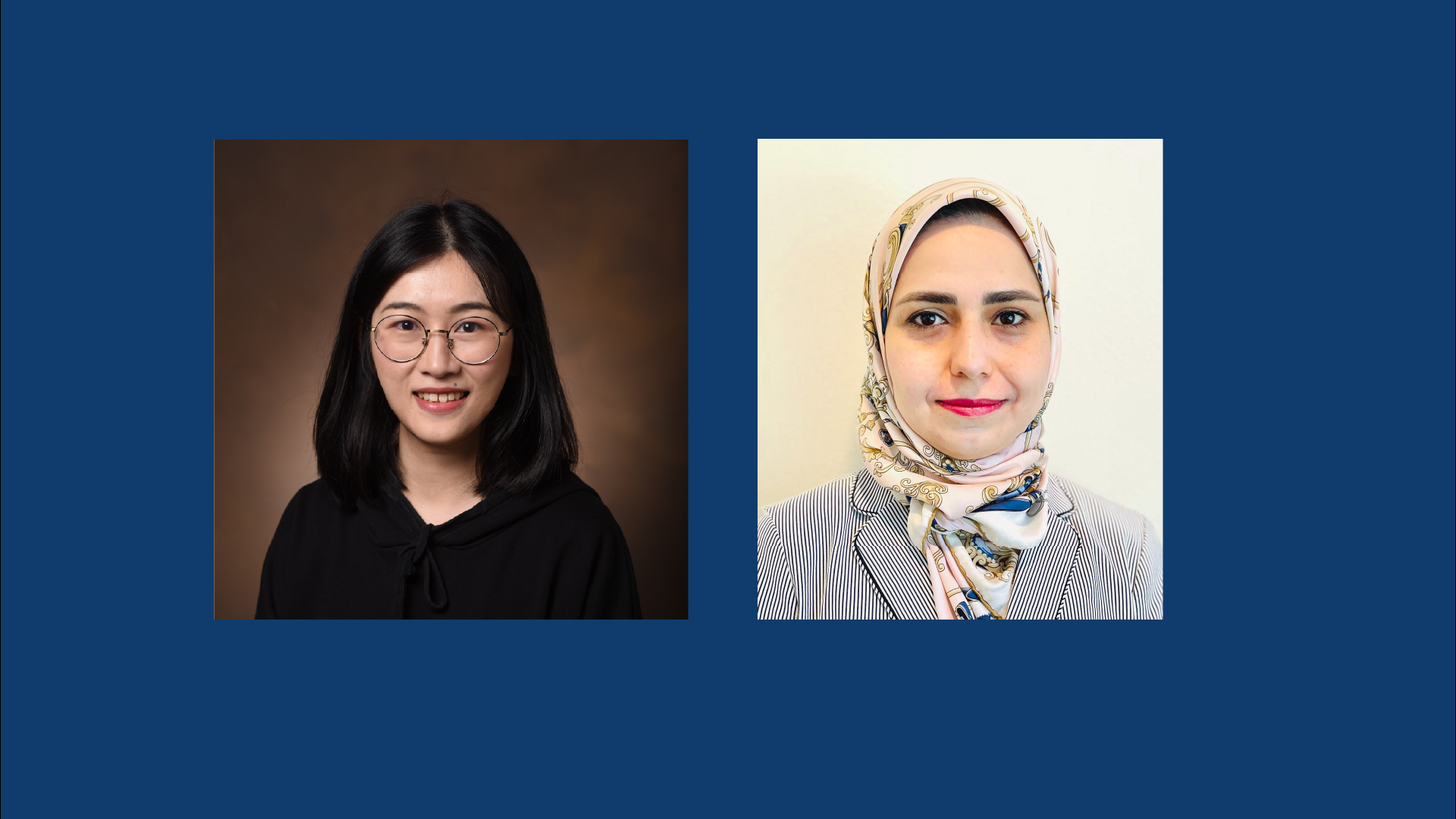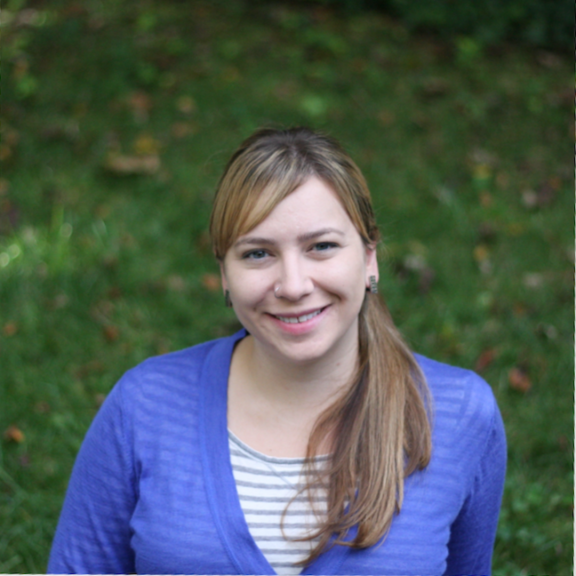Improving Your Odds: Optimizing Your Vanderbilt Biostatistics Application
Join us on Thursday, November 9, at 6 p.m. Central Time to hear directly from our directors of graduate studies and recruitment about what they look for in MS and PhD applications, life in Nashville, student successes, and more.
Biostatistics Department Service Milestones
Congratulations to the following faculty and staff members for reaching these service milestones at Vanderbilt University Medical Center:
| Name | Years at Vanderbilt University Medical Center |
| Yuwei Zhu, senior associate in biostatistics (See also Yuwei's 2019 Spotlight feature.) | 25 |
| Chiu-Lan "Heidi" Chen, research associate professor of biostatistics | 20 |
| Tebeb Gebretsadik, senior associate in biostatistics | 20 |
| Frank Harrell, professor of biostatistics | 20 |
| Tatsuki Koyama, professor of biostatistics | 20 |
| Lynne Berry, vice chair of informatics & collaborative programs | 15 |
| Zhiguo "Alex" Zhao, assistant in biostatistics | 15 |
| Sheau-Chiann Chen, research assistant professor of biostatistics | 10 |
| Liping Du, research assistant professor of biostatistics | 10 |
| Yaomin Xu, assistant professor of biostatistics and biomedical informatics | 10 |
| Shilin Zhao, assistant professor of biostatistics | 10 |
| Gustavo Amorim, assistant professor of biostatistics | 5 |
| Nicole Gunnison, business process manager | 5 |
| Andrew Spieker, assistant professor of biostatistics | 5 |
| Simon Vandekar, director of graduate recruitment | 5 |
| Jing Yang, research assistant professor of biostatistics | 5 |

Pictured left to right (foreground): Tatsuki Koyama, Alex Zhao, and Liping Du at our 20th anniversary poster session.

October 27 - {redcapAPI} R package (Teams presentation)
On Friday, October 27, at 1:30 p.m. Central Time, application developer Savannah Obregon will speak about the {redcapAPI} R package in a free presentation on Microsoft Teams. She is a member of the Vanderbilt Biostatistics team that developed a data processing layer within the package to help support clinical trials. REDCap is a secure web platform simplifying database and survey creation, while R facilitates reproducible research through its scripting capabilities, R Markdown integration for reports and package management. Originally designed for exporting the raw API data from REDCap, redcapAPI now includes robust data handling, ensuring reliable retrieval of analysis-ready data. It optimizes the transformation of raw REDCap data with cryptographic storage of API keys and streamlined API calls, making it a powerful tool.
Obregon graduated from Lipscomb University with a bachelor's degree in information technology management, with a minor in business and concentration on web development. She was a speaker at R/Medicine 2023, and she presented a poster on {redcapAPI} during the department's 20th anniversary celebration. She has made crucial contributions to the data coordination of ACTIV-6 since joining our department.
For access to this presentation, contact Ryan Moore, organizer of the department's Statistical Computing Series.
Celebrating our current postdocs
In observance of National Postdoc Appreciation Week, we thank our two current postdoctoral research fellows for their contributions to our department.
Jia Li (left) previously studied at Xiamen University and Shanghai Technology University as well as the German Heart Centre in Munich before joining our department four years ago. Her projects have included working on a single-cell multi-resolution marker-based annotation method (scMRMA), a single-cell and spatial transcriptomic clustering method (aKNNO), and single-cell analysis of Crohn's disease. Her accomplishments include a first-authored paper on scMRMA in Nucleic Acids Research.
Leila Azinfar (right) joined our department in April with a PhD in bioengineering from Missouri and master's degrees from Shaheed Behest University of Medical Sciences (biomedical engineering) and Amirkabir University of Technology (radiological systems engineering). At Vanderbilt, she works with Amir Asiaee, primarily on the causal effect estimation of regulatory molecules. Her publications include a first-authored paper on high-resolution imaging in the Journal of Biophotonics.
Vanderbilt Biostatistics to host ASA traveling short course
On October 20, we will host the short course “From R Markdown to Quarto” with the Middle Tennessee chapter of the American Statistical Association (ASA). This one-day course is designed for those who want to take their R Markdown skills and expertise and apply them in Quarto, the next generation of R Markdown. Quarto is an open-source scientific and technical publishing system that offers multilingual programming language support to create dynamic and static documents, books, presentations, blogs, and other online resources. The course will be taught by Mine Çetinkaya-Rundel, professor of the practice of statistical science at Duke University. It will be held in Light Hall from 9:30 a.m. to 5:00 p.m. See the course webpage for details and registration.
Members of the Middle Tennessee chapter of the ASA receive discounted registration. The cost is $70 for student members; $90 for student non-members; $140 for non-student members; and $180 for non-student non-members. Visit the ASA Chapters page to join or renew your membership.
Assistant professor and director of graduate recruitment Simon Vandekar is the president of the ASA's Middle Tennessee chapter. Other chapter officers from our department include assistant professor Amber Hackstadt, associate professor Robert Johnson, and associate professor Rameela Raman.
